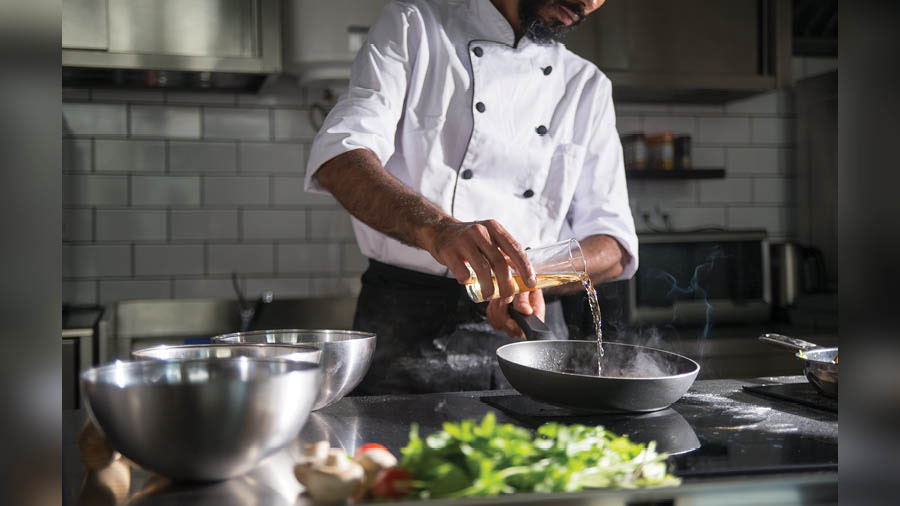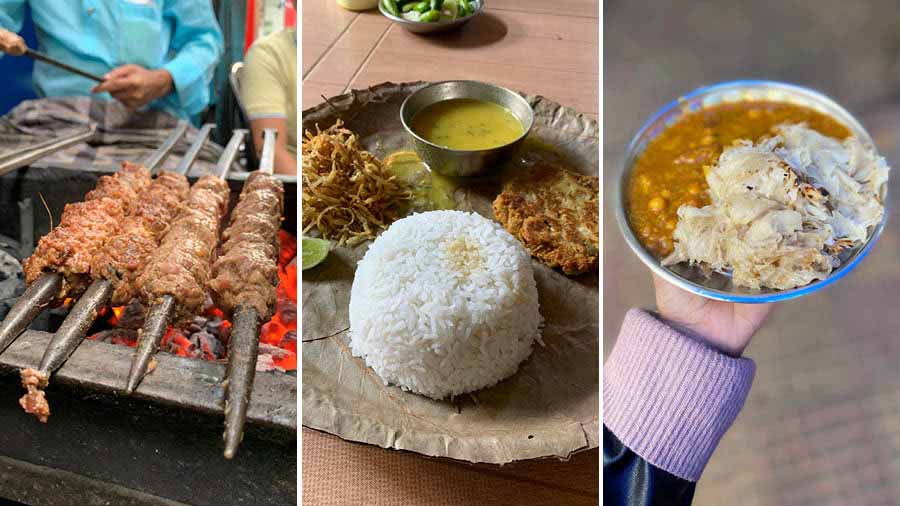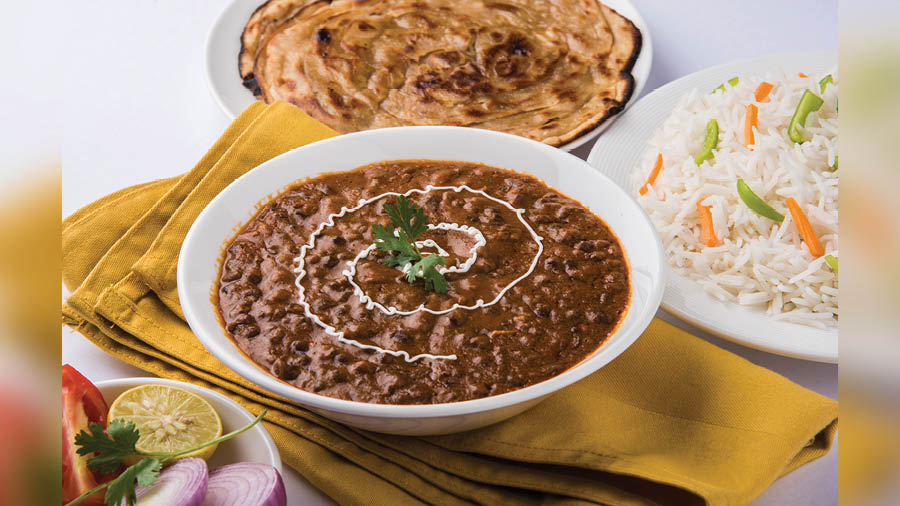I think the most important distinction that any cook or chef, especially self-taught, needs to understand really early is the difference between a recipe and a technique. Most often, it’s the latter that leads to the former. In its simplest form, a recipe is a set of instructions and ingredients put together with the intention of arriving at a particular culinary outcome. But those instructions almost always involve some form of technique or the other – knife-work, braising, roasting, dressing, even butchering.
Just think about it. As molecules and ingredients go, a pav and a baguette are made up of the same things – flour, yeast, salt and water. Yet, it’s how you apply the techniques of hydration, kneading, proofing, shaping and then baking, that determines the style of bread. The same can be said of the art of noodle- or cheese-making. Where the Italians made spaghetti, the Japanese made Udon; in the Middle East, they adore Halloumi, but in Jammu, they love their Kalari.
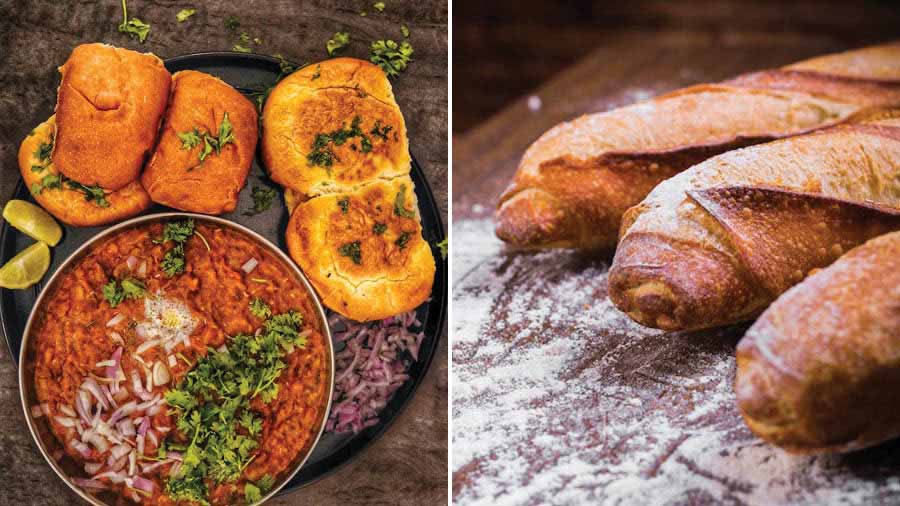
A pav and a baguette are made up of the same ingredients, but it’s the difference in technique that determines the style of bread Pexels
Mastering a technique: the key to creating great cuisine
Ultimately, as precise as you might be in weighing and picking your ingredients, what matters more is how measured you are with your technique. When you have mastered a technique, grasped all its variables, learned to sense and manipulate every physical or chemical process involved, that’s when you really grow in confidence as a cook. And over the centuries, the more a community or culture’s confidence has grown in the kitchen, the more the recipes that have come about. That’s what ultimately leads to the creation of a great cuisine.
Now, there are many reasons why the dinner table is rather blessed in the region of Bengal, especially in comparison to many other parts of the world. First, there’s the history, especially in Kolkata, where, over the years, the city became a melting pot of numerous communities and nationalities.
Why do the people of Bengal eat particularly well?
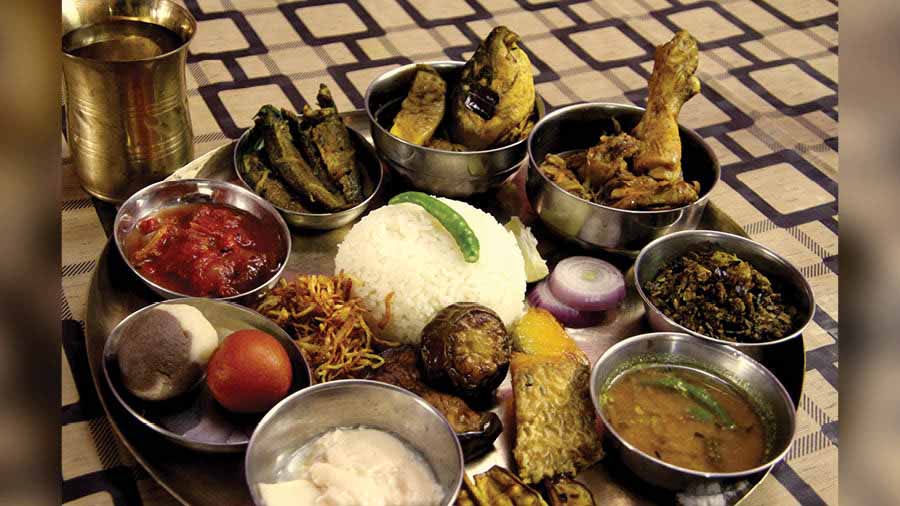
‘As a community, we are very committed to the ‘live to eat’ way of life’ Shutterstock
Then there’s the rich and bountiful terroir of the region, brimming with produce and sustained by the mighty Ganges and her sisters. Of course, there’s also the fact that, as a community, we are very committed to the ‘live to eat’ way of life. It’s not just that we have ritualised cuisine as a part of almost every religious and social custom; we have also invented daily customs, such as jol-khabar, that arguably have little to do with larger structures.
But I think the most crucial yet unacknowledged reason that the people of Kolkata and Bengal eat particularly well is that in every kitchen – be it at a restaurant, a street corner, a hole in the wall or in a household – there’s always someone who knows a culinary technique or three. In this article, I’m going to write about a few of my favourite technique-driven dishes and ingredients that make Bengal the culinary gem that it is.
A cultured ghee
It’s only appropriate that this ghee comes from a farm that’s on the outskirts of one of the region’s most culture-driven towns – Santiniketan. But, jokes and puns aside, there’s a reason why my team and I like to refer to Banalakshmi as Grand Cru. There are many ghees that we’ve managed to try across the various districts of the region. North Bengal, in particular, makes some of the more distinctive ghees, with a particularly sweet, grass-fed note. But none compares to Banalakshmi.
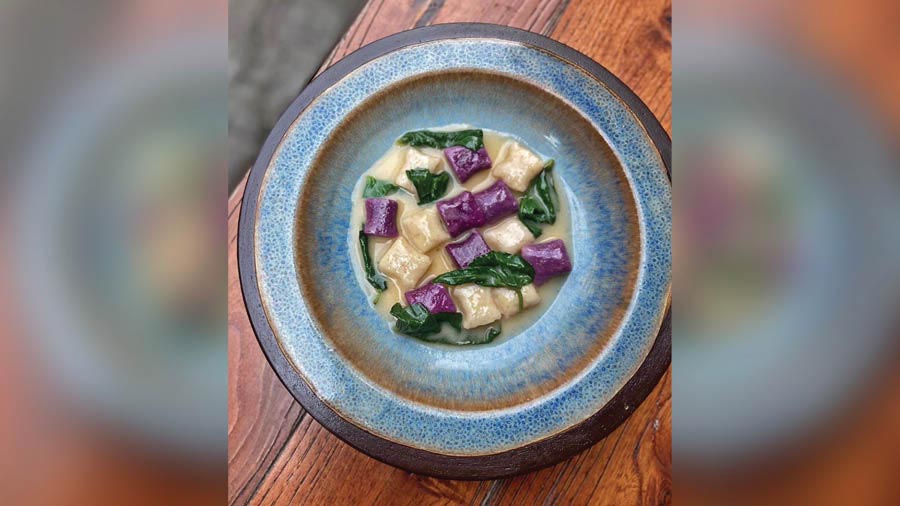
Banalakshmi ghee is one of the most unique and complex ingredients used in the Sienna kitchen, such as this Ranga Aloo Gnocchi with Kurkure Posto and Kolmi Shaak in a Banalakshmi Ghee Sauce Sienna Cafe
To begin with, it is darker and deeper than most in complexion, with a distinctively nutty, almost caramelised popcorn note to it. But the most unique thing about it is that its finish has a little bit of a sour twang – like sourdough, Greek yoghurt, or very much like the latest culinary trend of cultured butters.
On further delving, we found that there are a few ways of making good ghee, but the most laborious one adds a step: turning cream and full fat milk to dahi before it is churned to butter. That extra step and technique goes a long way in making this one of the most unique and complex ingredients in the Sienna kitchen.
From Maillard to mishti
Most often, we talk about the Maillard Reaction – the physical transformation of protein and sugars when they come into contact with heat – when we are frying, grilling, searing or sautéing. Simply put, in culinary terms, it’s the science of browning and developing flavour. But, obvious applications aside, I think this technique is also great when put to use in simmering and reducing milk. All over the country, every home makes kheer or payesh or payasam.
That very same technique is also the secret behind what is probably the region’s most well known dessert – Mishti Doi. Yes there’s the addition of gur or caramel, and thus a deeper colour and sweetness. But with the best variants, especially in the case of good Lal Doi, the main reason behind that deep, clay-like, reddish-brown colour, the infinitely creamy yet nutty and tart finish, the creamiest of textures, is the gear of the Maillard Reaction that one has applied.
Chaap & confit
For most of the nation – especially if you’re up North – Mutton Champ or Chaap tends to refer to a cut or boti derived from the prime rib of the bakra. It’s not the same in Kolkata; here, I love how ‘Mutton Chaap’ is as much a recipe as it is a butchering technique.
We’ve also always known the word, chaap, to mean pressure or stress; well, that’s precisely what the butcher does to all the lesser cuts and trimmings from the neck, ribs, belly and spine, but with the blunt end of the cleaver. This almost-hammering action helps in breaking down a lot of the sinew and connective tissue. The small botis are then marinated before being gently simmered in their own rendered fat in a deep and very wide tawa.
This slow cooking method always reminds me of confit, a technique that’s more French than Mughlai. To me, anyone who’d like to catch a sight and taste of this amazing skill and recipe should go to the OG branch of Royal Indian Restaurant, near Nakhoda Masjid. I’m yet to find a better practitioner of this meaty art. PS: they also make my favourite hand-chopped keema.
To koshao is to caramelise
Every great culture and cuisine has their take on caramelised onions. In northern India, there’s the Pyaaz Kachori and Do Pyaza. The French have their soup and tart. In the United States, caramelised onions are what makes a burger gourmet or not.
In Bengal, caramelised onions are what go into the making of arguably the region’s favourite and most well-known way of preparing mutton: the Kosha Mangsho.
It’s a dish that you now see making its way onto menus not just in other Indian cities, but across the globe. As the culinary world continues to globalise, the preparation is starting to become synonymous with what the world thinks is Bengali Mutton Curry.
That said, this preparation is everything that curry is not, as there’s little to no braising involved. If anything, it is a labour of love that usually takes hours of careful but firm stirring to get just right. The trick behind the best Kosha Mangsho is to slice your onions – never chop or grind – and then slowly but steadily caramelise or koshao them with the marinated mutton and spices in a heavy-bottomed kadai.
That’s it, really – absolutely no special masalas or secret ingredients.
If you’re patient and dedicated to the technique of caramelising, then what you’re left with is the most gloriously rich, almost chocolate brown, melt-in-your-mouth mutton that money can buy. Most like to have it with porota or pulao, but I am most partial to Phulko Luchis (another amazing, amazing technique)!
A copywriter by training, a Delhi-ite at heart and a probashi Bengali by blood, Auroni Mookerjee used to make ads for a living. A few years ago, he gave up his copywriter’s job to cook and feed people full-time, and moved to the deliciously joyous city of Kolkata. Now, he is executive chef and head of the kitchen family at the Sienna Store & Cafe
